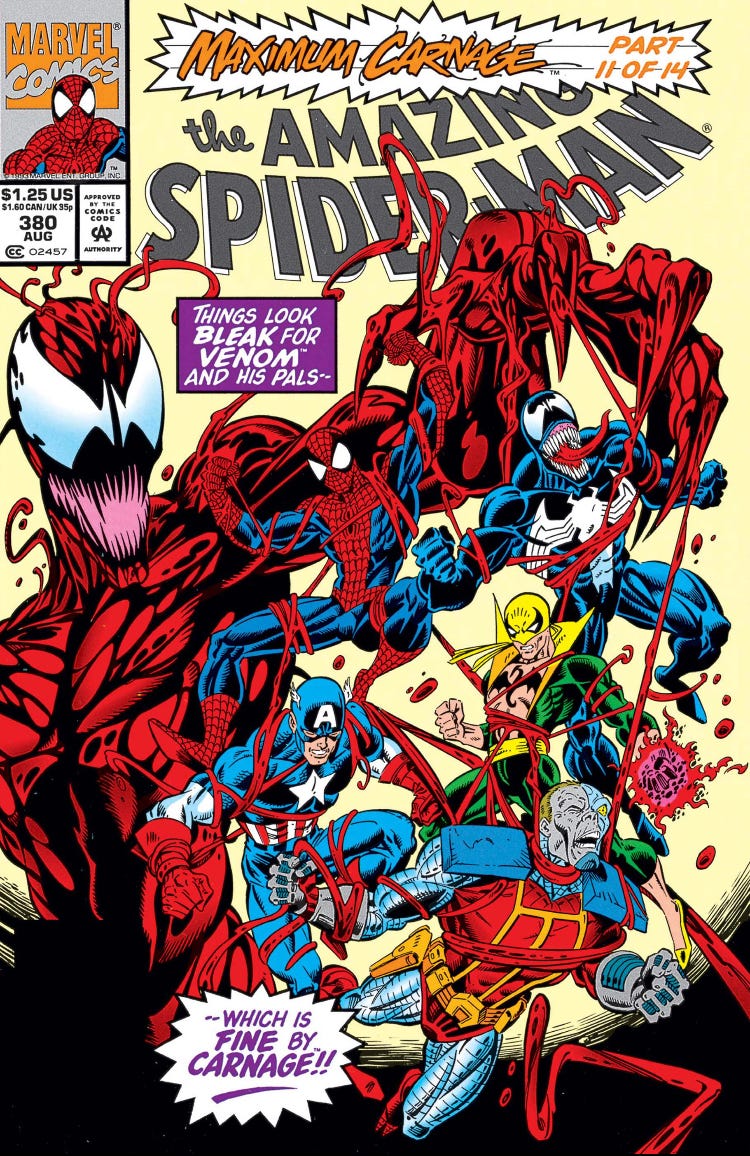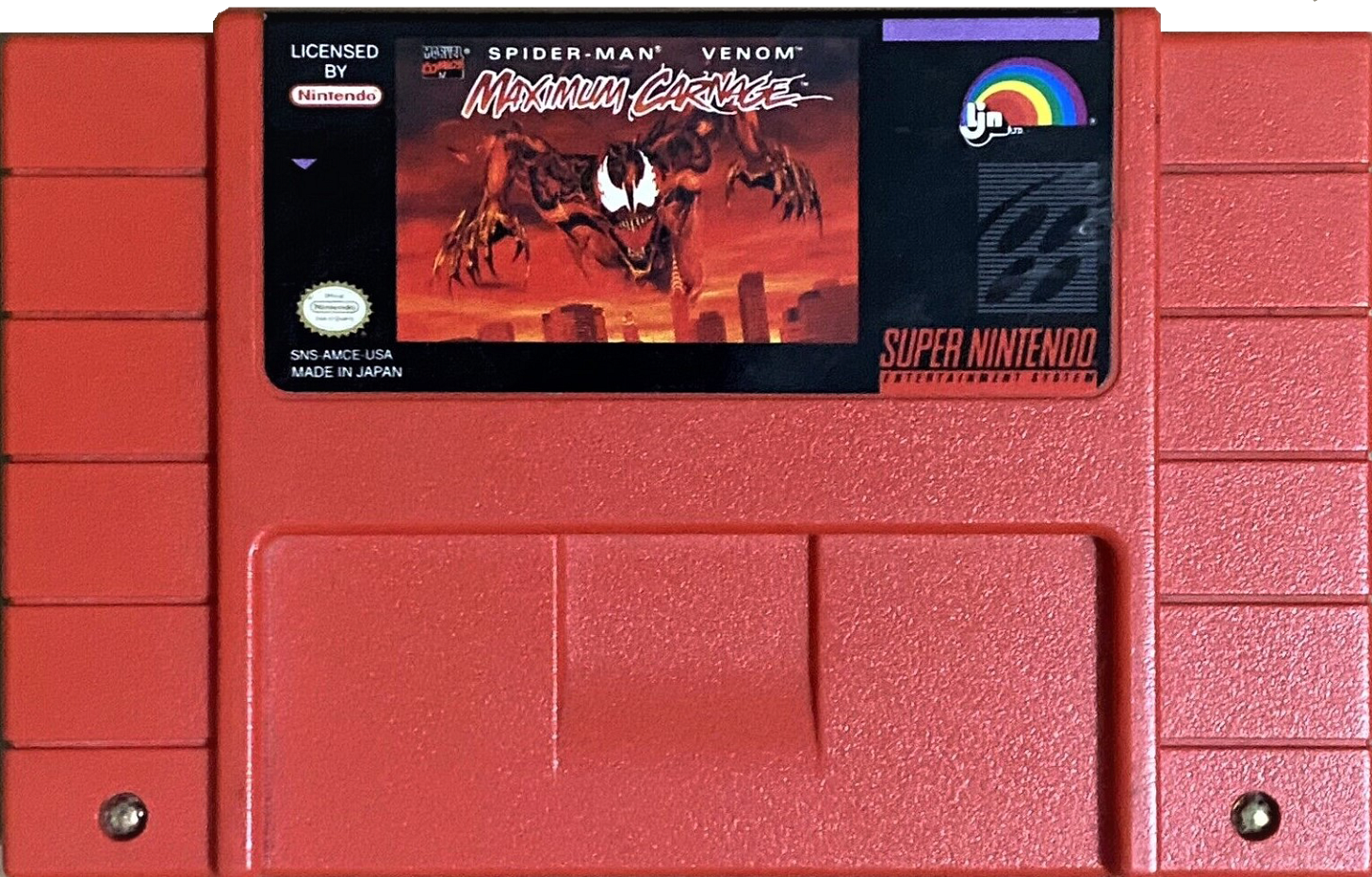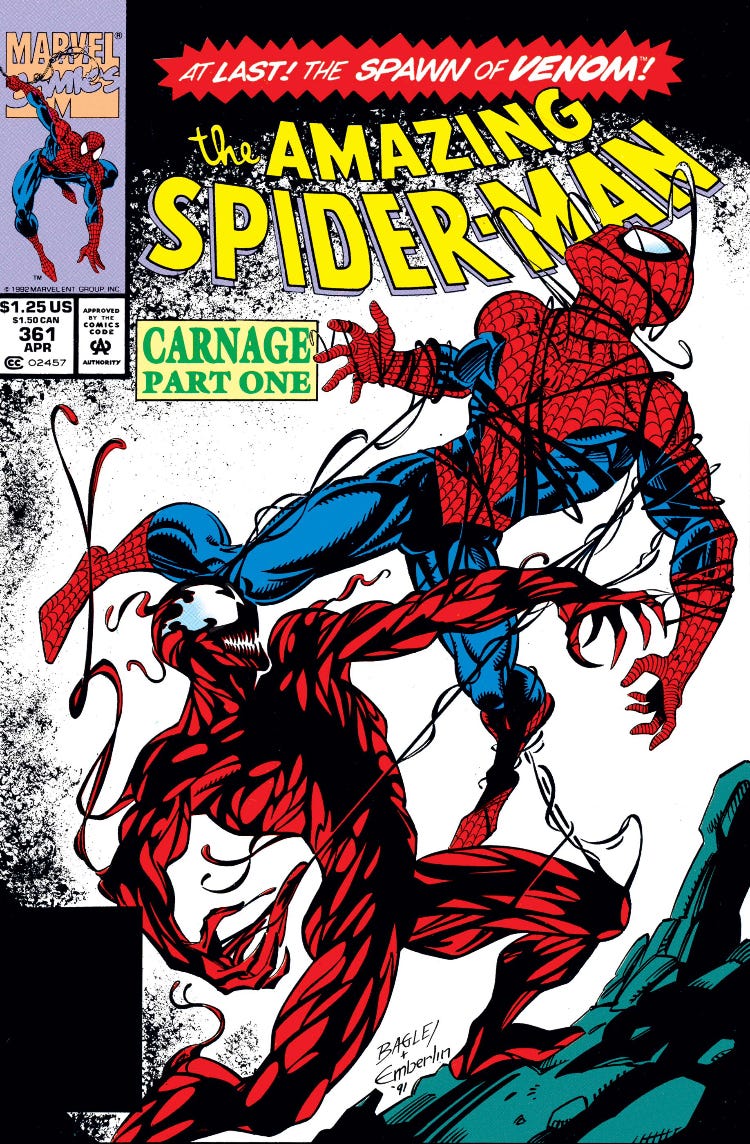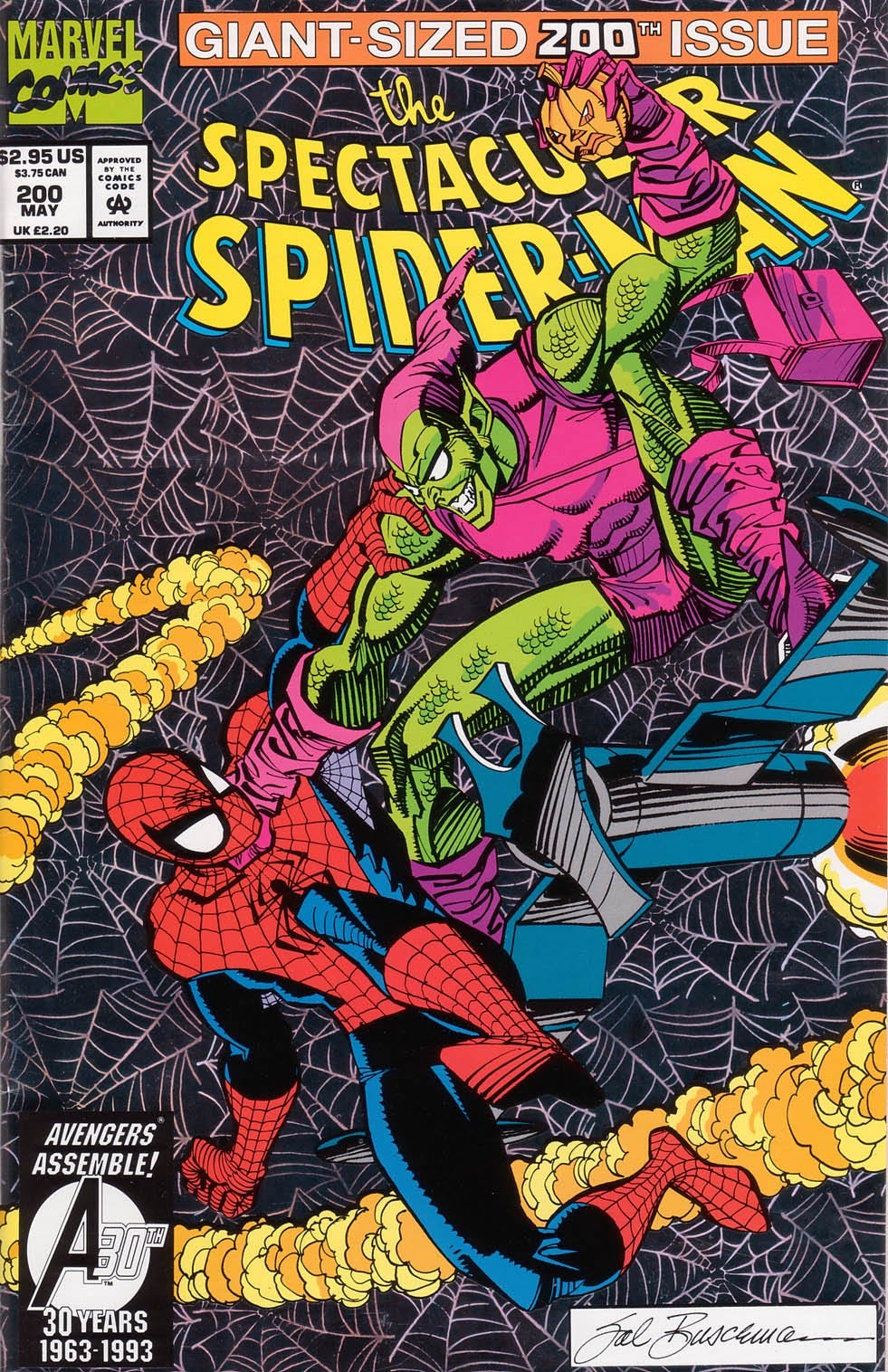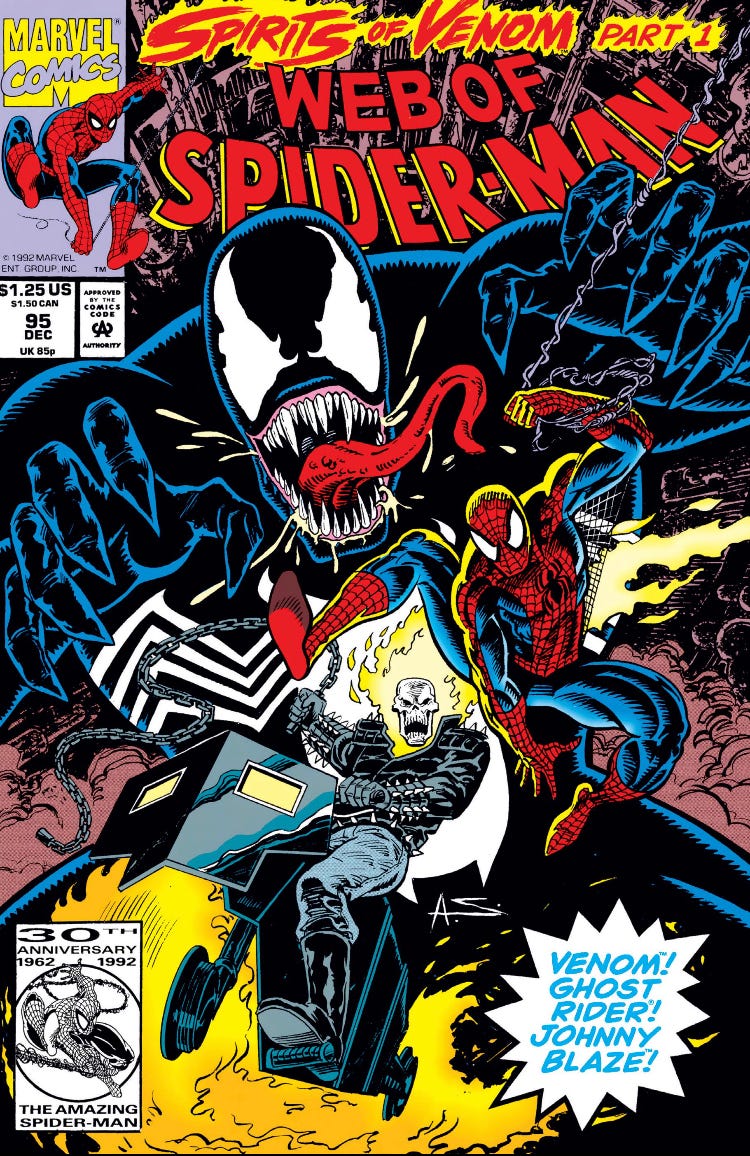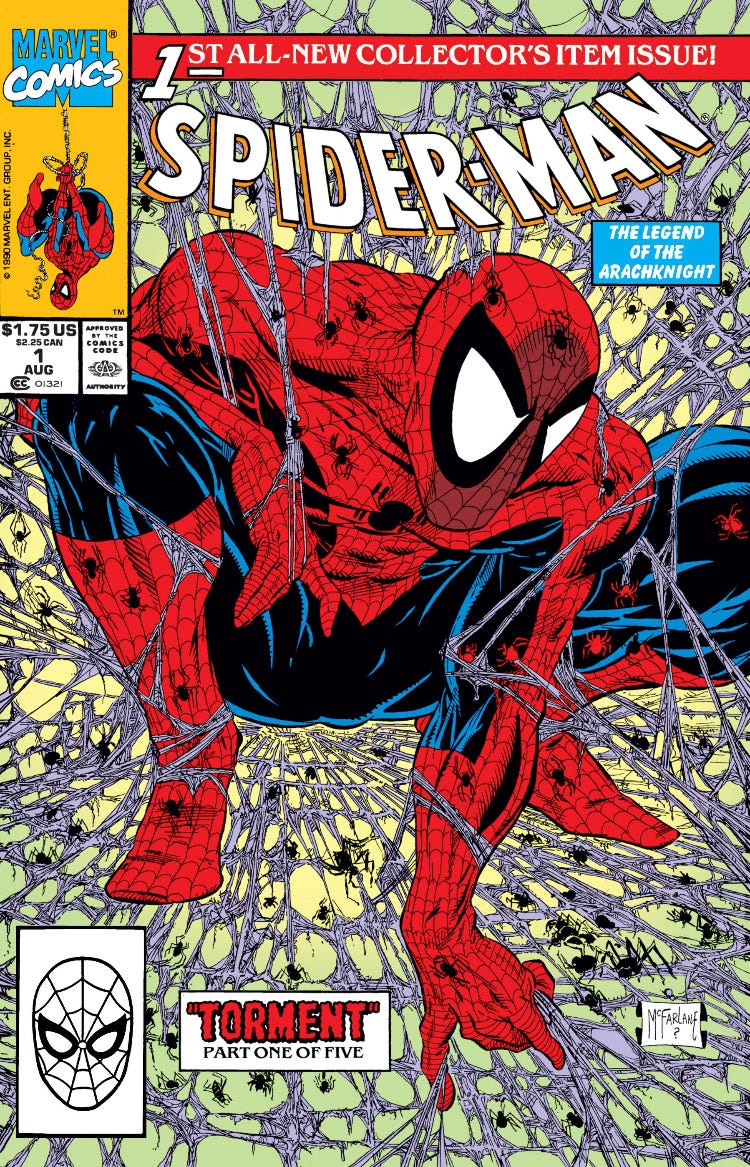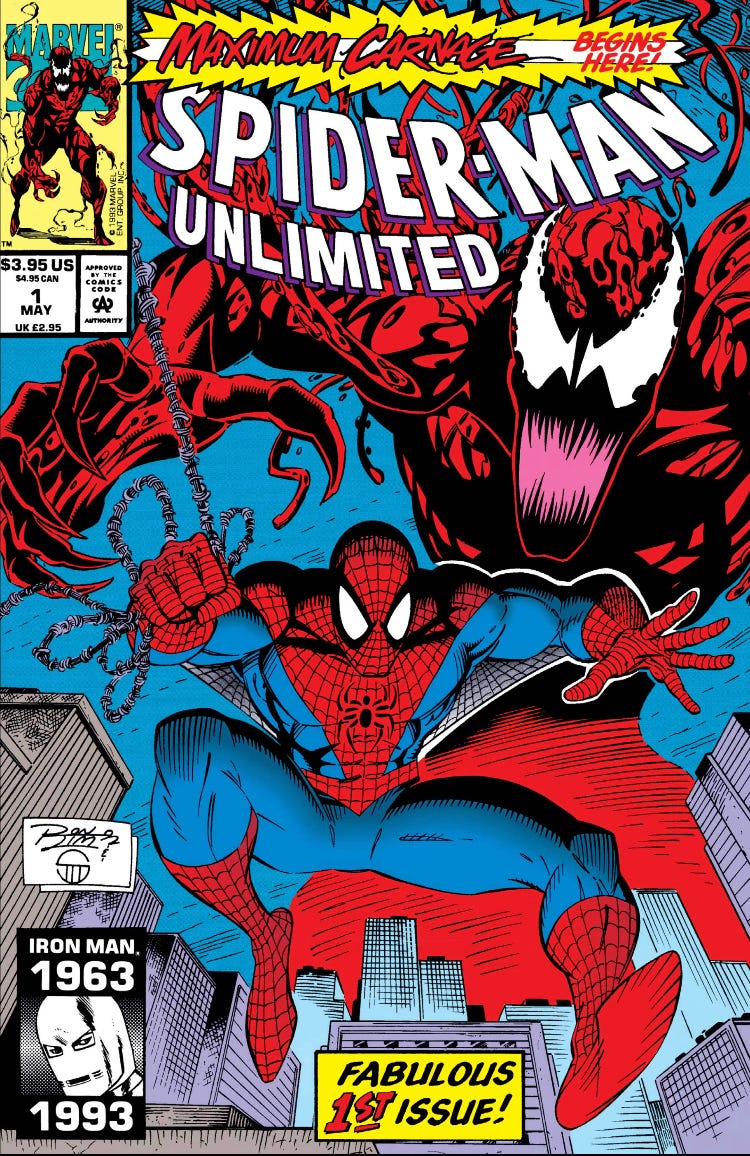Revisiting “Maximum Carnage” Part 1
Part I: Remember the ‘90s?
I teased in the final part of my series on Spectacular Spider-Man by J.M. DeMatteis and Sal Buscema that there were three more issues remaining in the run following Spectacular Spider-Man #200. It would have been impossible to cover those three issues without the context that they were parts five, nine, and thirteen of the fourteen issue Spider-Man mega event known as “Maximum Carnage.”
I hold a massive amount of nostalgia for this event as the first comic book I ever bought was the twelfth part in this fourteen issue behemoth (more on that later). The event ran through five different Spider-Man titles in the summer of 1993, and it led to a wildly popular video game adaptation on the Super Nintendo and Sega Genesis in 1994 (with an awesome all red cartridge).
For a comic book to penetrate the cultural zeitgeist that way in a time before superhero movies were the biggest blockbusters on the planet was especially impressive. So how did five different Spider-Man titles come together to arrive at this singular moment? Let’s take a look at each series to see where they were at this point in time.
Amazing Spider-Man
This has always been the flagship Spider-Man title. David Michelinie had been writing Amazing Spider-Man since all the way back in 1987 beginning with issue #290. Todd McFarlane joined him on art duties beginning with #298, and the two co-created the character Venom (first full appearance in #300). They would collaborate on another Venom story in Amazing Spider-Man #314-316 that better fleshed out the character. McFarlane would leave the title in 1990 to work on a new series that he would both write and illustrate (more on that in a bit), and he would be replaced with artist Erik Larsen. Michelinie and Larsen would collaborate on two Venom stories in Amazing Spider-Man #331-333 and 346-347. Larsen would eventually be replaced by Mark Bagley, and the two would quickly collaborate on a couple more symbiote stories. Carnage would be introduced by Michelinie and Bagley in Amazing Spider-Man #361-363 (which would also feature Spider-Man teaming up with Venom for the first time to tackle an even larger threat). Shortly before the launch of “Maximum Carnage,” Michelinie and Bagley would tell what was meant to be the final Spider-Man versus Venom story in Amazing Spider-Man #374-375 when the two declare a truce at the end so that Venom could begin headlining his own series as an antihero. Of all of the titles involved in “Maximum Carnage,” Amazing Spider-Man at the time was the most naturally connected. Michelinie had written the vast majority of biggest symbiote-themed stories, and he and Bagley had worked on the only Carnage story up to that point. Michelinie and Bagley would collaborate on all of the Amazing Spider-Man issues during “Maximum Carnage.”
Spectacular Spider-Man
I just wrote a seven-part retrospective series on the J.M. DeMatteis and Sal Buscema run on Spectacular Spider-Man. I would suggest reading those pieces for a thorough understanding of what has been happening in that title. The TL;DR version: the two had been working together since Spectacular Spider-Man #178-200, and the focus was on Peter Parker’s relationships with his wife Mary Jane and his best friend/worst enemy Harry Osborn. Spectacular Spider-Man was also the second longest running Spider-Man title at the time. DeMatteis and Buscema would collaborate on every issue of Spectacular Spider-Man during “Maximum Carnage.”
Web of Spider-Man
Web of Spider-Man is interesting in that it had much less continuity when it comes to creative teams compared with Amazing Spider-Man and Spectacular Spider-Man at this moment in time. Howard Mackie had written the title from #84-96, and Terry Kavanagh took over starting with #97. Alex Saviuk had been an illustrator for the book off and on for years, but he became the primary artist starting with #84 with Mackie. He and Kavanagh would be the creative team on the book for all of the “Maximum Carnage” issues. The biggest contribution to the foundation of the “Maximum Carnage” story coming out of this title would probably be the four issue “Spirits of Venom” arc that took place in Web of Spider-Man #95-96 by Mackie and Saviuk and Ghost Rider/Blaze: Spirits of Vengeance #5-6 (also written by Mackie with art by Adam Kubert) that saw Spider-Man, Venom, Demogoblin, and Doppelgängers (all major characters in “Maximum Carnage”) in a battle royale with one another along with Ghost Rider (Danny Ketch) and Johnny Blaze. It provides a bit of connective tissue with the larger crossover to come. Kavanagh and Saviuk would collaborate on every issue of Web of Spider-Man during “Maximum Carnage.”
Spider-Man
The fourth and most recent of the various ongoing Spider-Man series leading up to “Maximum Carnage” is the adjectiveless Spider-Man. Launched in 1990, Spider-Man was created as a vehicle for Todd McFarlane to have complete control over both writing and art duties. This is the title McFarlane left Amazing Spider-Man to pursue. Ironically, McFarlane ultimately left the book after sixteen issues and was replaced by Erik Larsen (who had replaced him on Amazing Spider-Man as well). Larsen stayed on the book through issue #23 at which time he left Marvel altogether to cofound Image Comics along with McFarlane. After Larsen’s departure, Spider-Man featured a rotating assortment of writers and artists without a consistent creative until after “Maximum Carnage” concluded. Michelinie, Kavanagh, and DeMatteis would all write one issue each of Spider-Man during “Maximum Carnage” with Tom Lyle serving as illustrator.
Spider-Man Unlimited
The fifth and final title to participate in the “Maximum Carnage” event was a quarterly title with double-sized issues called Spider-Man Unlimited. The very first issue of the series begins with the first part of “Maximum Carnage” written by Tom DeFalco and illustrated by Ron Lim! The second issue would serve as the final chapter of “Maximum Carnage” with DeFalco once again writing and Bagley and Lim splitting the penciling duties.
We now have all of the writers, illustrators, and titles in place. Come back next week when we’ll take a look at the story and characters.


